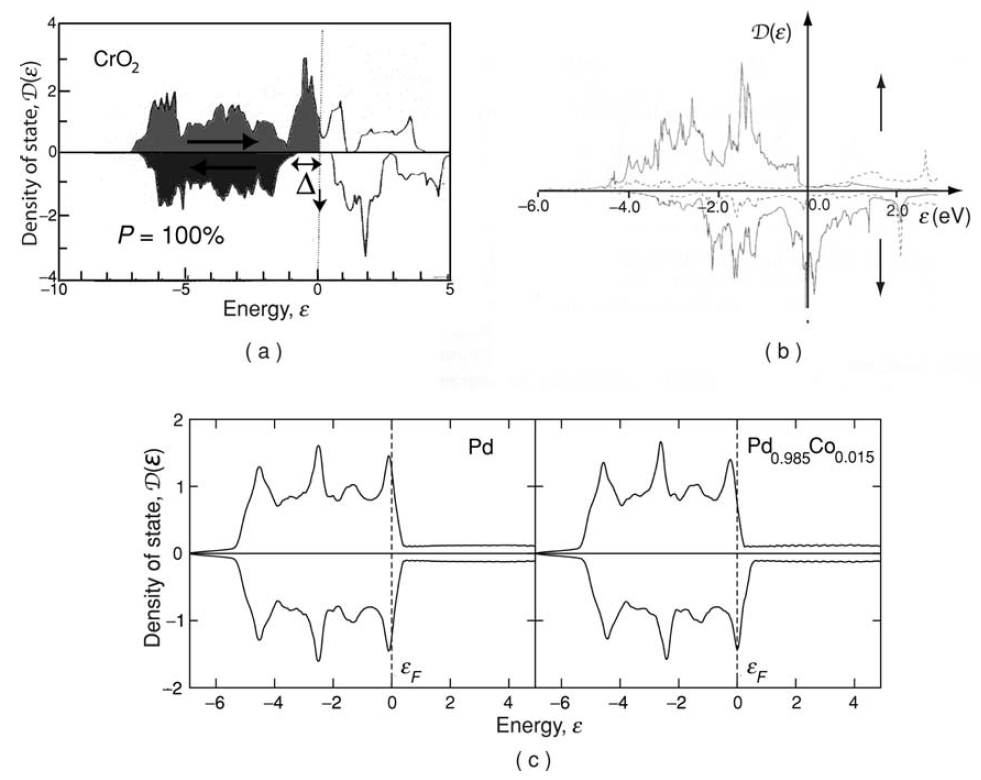


 الفيزياء الكلاسيكية
الفيزياء الكلاسيكية
 الكهربائية والمغناطيسية
الكهربائية والمغناطيسية
 علم البصريات
علم البصريات
 الفيزياء الحديثة
الفيزياء الحديثة
 النظرية النسبية
النظرية النسبية
 الفيزياء النووية
الفيزياء النووية
 فيزياء الحالة الصلبة
فيزياء الحالة الصلبة
 الليزر
الليزر
 علم الفلك
علم الفلك
 المجموعة الشمسية
المجموعة الشمسية
 الطاقة البديلة
الطاقة البديلة
 الفيزياء والعلوم الأخرى
الفيزياء والعلوم الأخرى
 مواضيع عامة في الفيزياء
مواضيع عامة في الفيزياء|
Read More
Date: 10-2-2021
Date: 27-2-2021
Date: 8-3-2021
|
Electronic structure
The electron dispersion relations ε(k) of spin-polarized electrons are a complete description of the electronic structure of a solid. Photoemission spectroscopy gives partial information about the dispersion relations and the density of states D(ε). The degree of spin polarization of electrons near the Fermi level may be inferred from spin-polarized photoemission, or from tunnelling or point contact experiments involving a ferromagnet and a superconductor. The results are surprising insofar as electrons from iron, cobalt and nickel all exhibit a positive spin polarization of about 40%, whereas the measured value for the half-metallic ferromagnet CrO2 is >95%. The strong ferromagnets Co and Ni might be expected to show a negative polarization on account of the 3d ↓ band at εF . Electrons emitted from the 3d metals may have predominant 4s character.
However, the main technique for exploring the electronic structure of ferromagnets is computational. Electronic structure calculations and some further examples are shown in Fig. 1. The local spin density approximation (LSDA) has proved to be rather reliable for calculating the zero-temperature spin-polarized density of states for 3d metals and 4f –3d intermetallic compounds. By introducing spin-orbit coupling it is possible to take into account the orbital moments and estimate the 3d band anisotropy, although the anisotropic energy is only 10−6 of the band energy. The LSDA method can also be used to calculate hyperfine interactions and 4f crystal-field coefficients. Moments of different atoms in the structure are determined from the local densities of states.

Figure 1: Examples of electronic structure calculations: (a) a half-metal CrO2, (b) a ferromagnetic intermetallic compound SmCo5; the solid lines are the 3d spin density averaged over the two Co sites and the dashed line is the 5d spin density of Sm – and (c) a dilute alloy PdCo; pure Pd is not magnetic, but doping with 1.5% Co introduces a giant moment of 18 μB per cobalt atom. (Data courtesy of Stefano Sanvito.)



|
|
|
|
مخاطر خفية لمكون شائع في مشروبات الطاقة والمكملات الغذائية
|
|
|
|
|
|
|
"آبل" تشغّل نظامها الجديد للذكاء الاصطناعي على أجهزتها
|
|
|
|
|
|
|
تستخدم لأول مرة... مستشفى الإمام زين العابدين (ع) التابع للعتبة الحسينية يعتمد تقنيات حديثة في تثبيت الكسور المعقدة
|
|
|